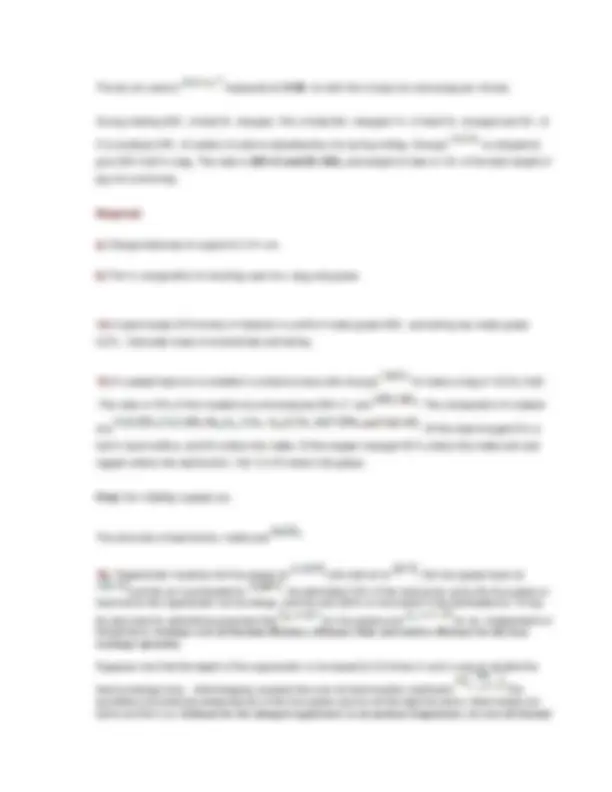





Study with the several resources on Docsity

Earn points by helping other students or get them with a premium plan


Prepare for your exams
Study with the several resources on Docsity

Earn points to download
Earn points by helping other students or get them with a premium plan
Community
Ask the community for help and clear up your study doubts
Discover the best universities in your country according to Docsity users
Free resources
Download our free guides on studying techniques, anxiety management strategies, and thesis advice from Docsity tutors
Self-evaluation questions related to mineral beneficiation and metal production, covering topics such as self evaluation, ore minerals, smelting, electro winning, and calcination. The questions require the student to apply their knowledge of these topics in order to provide answers in two or three sentences. The document also includes a problem requiring charge balances and composition calculations for a copper converter and a cupola.
Typology: Study notes
1 / 6

This page cannot be seen from the preview
Don't miss anything!




self evaluation
self evaluation
1.Stannite deposits constitute an important source for which of the following metal
a) Thorium
b) Titanium
c) Molybdenum
d) Tin
a) Mineral is separated
b) Particles containing mineral are separated
c) Mineral is concentrate
d) Tailing are separated
a) Horizontal retort
b) Blast furnace
c) Rotary kiln
d) Laser beam
a) Carbon
b) Aluminum
c) Hydrogen
a) Hearth roaster
b) Blast roaster
c) Flash roaster
a) Classification according to size
b) Classification according to specific gravity
c) Separation of slime
d) Thickening of pulp.
a) Solid solution of sulphides
b) Liquid solution of oxides and sulphides
c) Liquid solution of metal sulphides
d) Solid solution of sulphides and arsenides.
vi) What is the purpose of poling in fire-refining of copper?
vii) What is cryolite ratio in Hall-Heroult bath?
viii) Why is it not possible to used high silica bauxite for the Bayer process?
ix) While galena and sphalerite concentrates are dead roasted but not the chalcopyrite concentrate. Give reasons.
x) Distinguish between kroll and Hunter processes of titanium production.
xi) Name aluminium production plants and their locations in India?
xii) Why is it not possible to produce Al by reduction smelting?
coating, which analyzes as and unoxidized constituents 15%. Assume
that this is entirely corroded by the. The flux carries.
The blister copper is. The converter gases carry no free oxygen.
Required:
a) The weight of magnetite coating produced, flux required and slag made.
b) The weight of blister copper, and the % of copper recovery
c) The blowing time of each stage.
d) The volume and % composition of the converter gases.
The dry air used is measured at 313K to melt 1ton of pig iron and scrap per minute.
During melting 20% of total Si charged, 15% of total Mn charged 1% of total Fe charged and 5% of
C is oxidized,19% of carbon of coke is absorbed by iron during milting. Enough is charged to give 30% CaO in slag. The coke is 92% C and 8% SiO 2 and weight of coke is 1/9 of the total weight of pig iron and scrap.
Required:
a) Charge balances of cupola for 5 hr run.
b) The % composition of resulting cast iron, slag and gases.
A plant treats 210 tonnes of material in a shift of metal grade 40% and tailing has metal grade 0.2%. Calculate mass of concentrate and tailing.
A roasted lead ore is smelted in a blast furnace with enough to make a slag of 18.5% CaO
.The coke is 16% of the roasted ore and analyzes 90% C and. The composition of roasted
ore;. Of the lead charged 5% is lost in dust andflue, and 8% enters the matte. Of the copper charged 50 % enters the matte and rest copper enters into lead bullion .Ten % of S enters into gases.
Find: Per 1000Kg roasted ore
The amounts of lead bullion, matte and
Suppose now that the depth of the regenerator is increased to 2.5 times in such a way to double the
heat exchange area while keeping constant the over-all heat transfer coefficient .The quantities and entering temperatures of the flue gases and air will be kept the same. Heat losses are same as that in a). Estimate for the enlarged regenerator (a) air preheat temperature, (b) over-all thermal